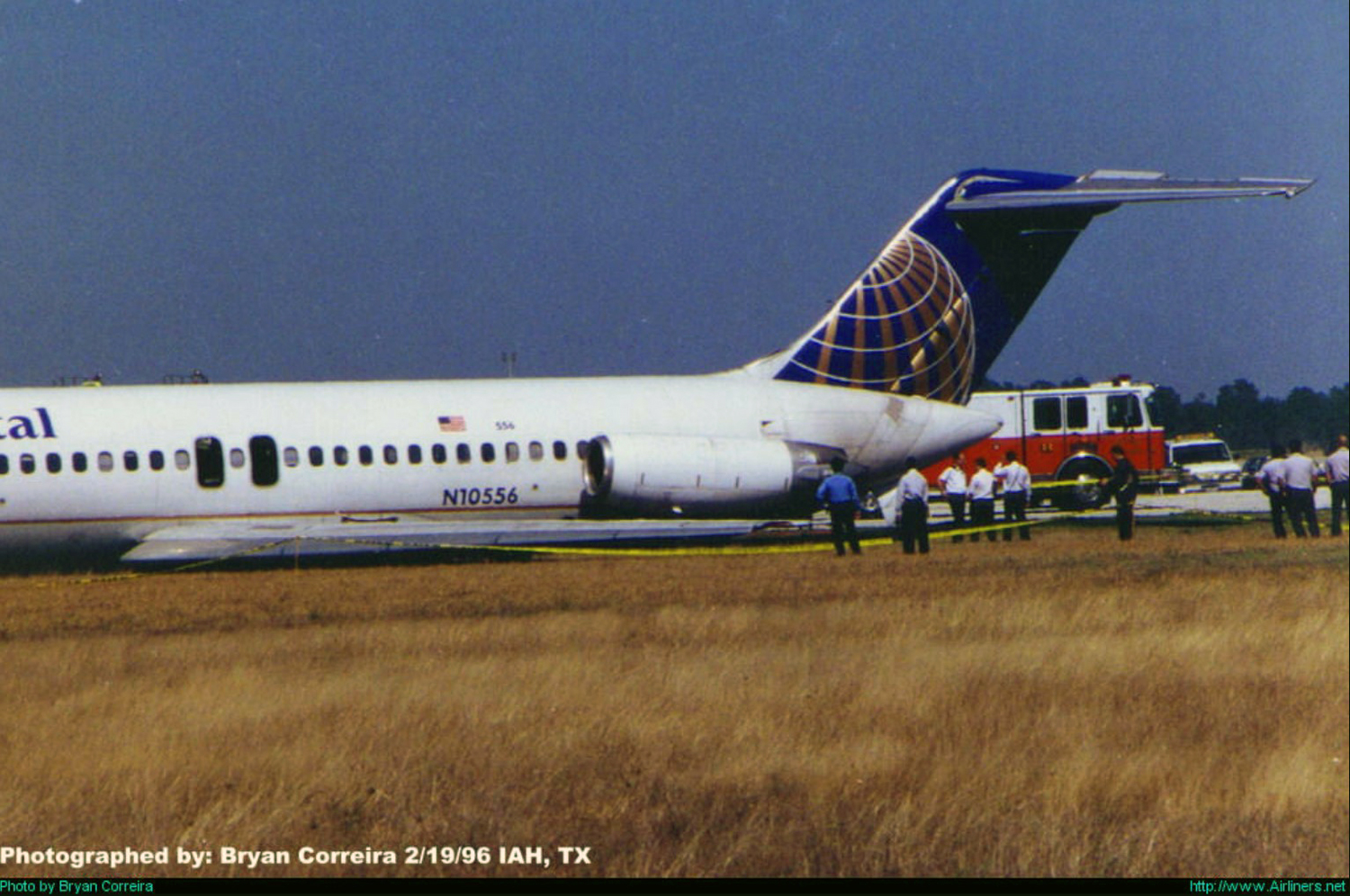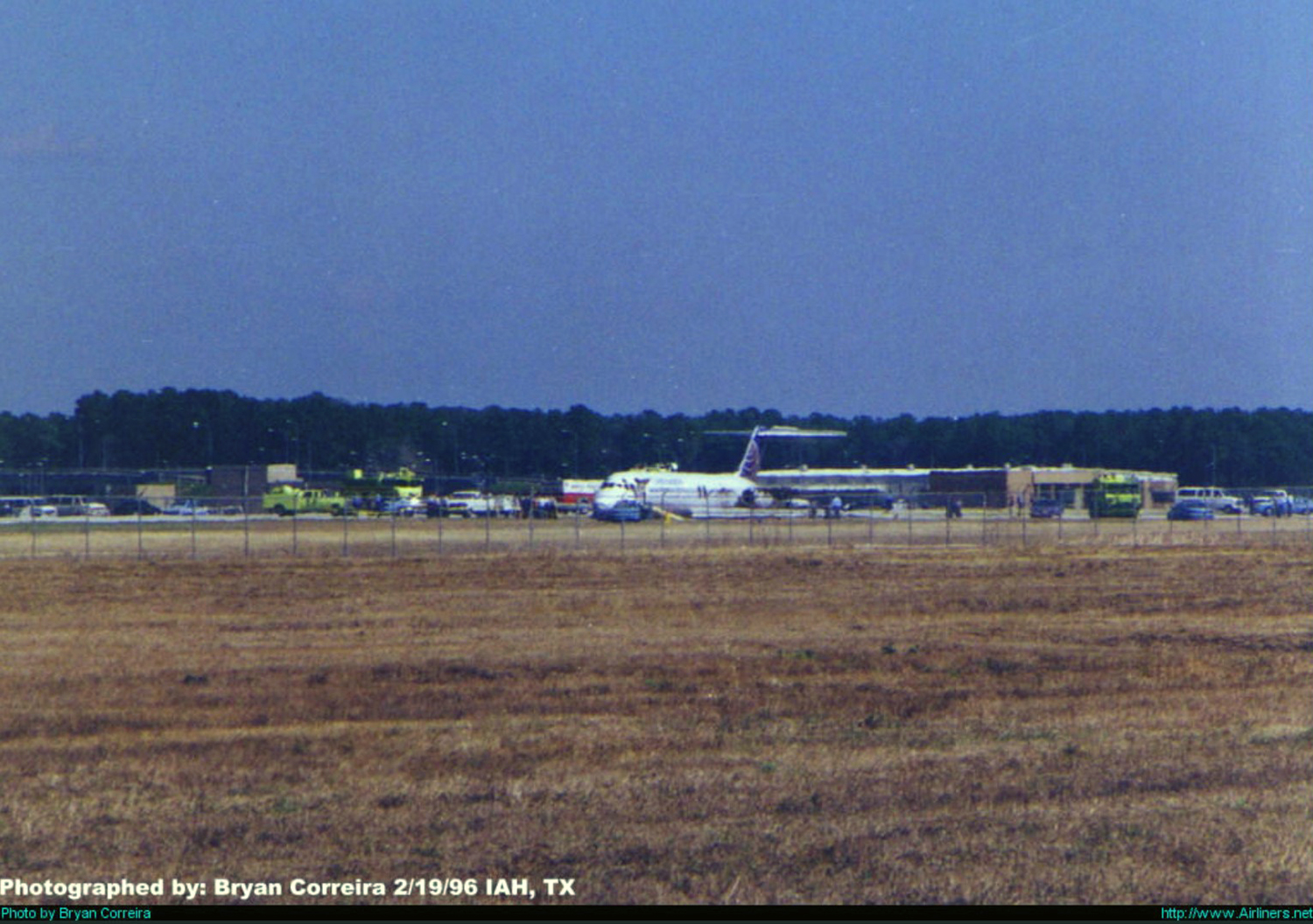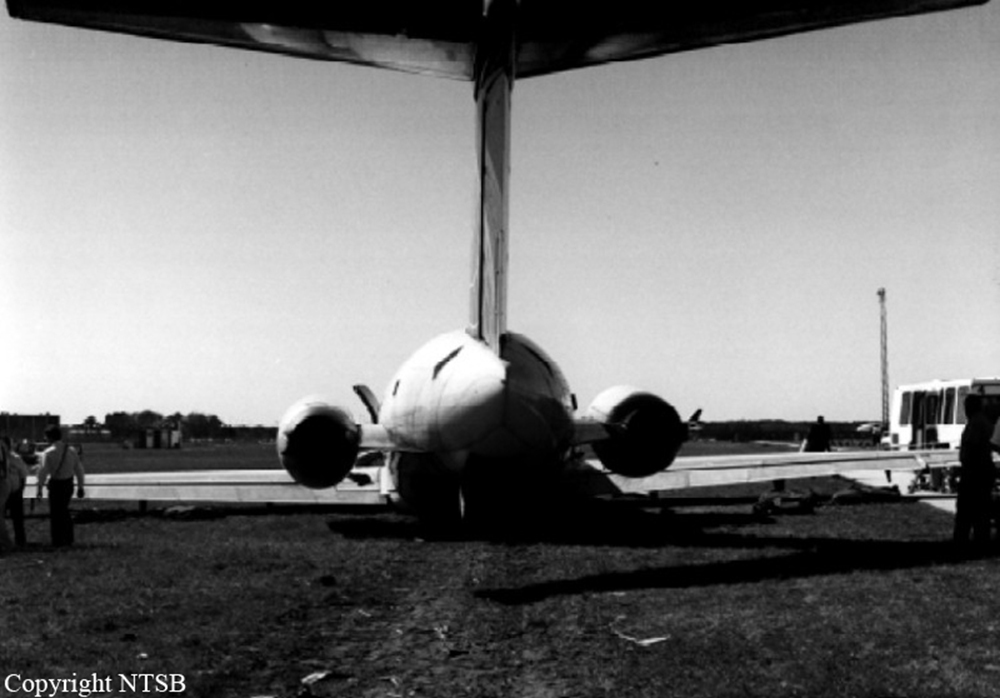Country
Crash of a Douglas DC-9-32 on Mt Sumagaya: 104 killed
Date & Time:
Feb 2, 1998 at 1100 LT
Registration:
RP-C1507
Survivors:
No
Schedule:
Manila – Tacloban – Cagayán de Oro
MSN:
47069
YOM:
1967
Flight number:
5J387
Crew on board:
5
Crew fatalities:
Pax on board:
99
Pax fatalities:
Other fatalities:
Total fatalities:
104
Aircraft flight hours:
73784
Circumstances:
The aircraft departed Manila-Ninoy Aquino Airport at 0916LT on a regular schedule flight to Cagayán de Oro. The crew made an unscheduled stop at Tacloban Airport to deliver spare tires for another Cebu aircraft. It took off from Tacloban Airport at 1002LT and continued to Cagayán de Oro at FL115. While descending in marginal weather conditions, the aircraft struck the slope of Mt Sumagaya (2,234 metres high) located about 54 km northeast of Cagayán de Oro Airport. First rescuers arrived on site about 24 hours later and the wreckage was found in an isolated area about 150 metres below the summit. The aircraft disintegrated on impact and all 104 occupants were killed, among them five foreigners including one Swiss citizen. At the time of the accident, weather conditions were marginal with clouds and strong winds.
Probable cause:
It was determined that the aircraft was off track by three km at the time of the accident. The following findings were reported:
- Poor operational controls by Cebu Air,
- Pilot training and practices were inadequate and unacceptable,
- The operator was non compliant with crew training procedures,
- More than half of the 17 procedures analyzed by the operator were deficient,
- Aircraft components were still in use after their expiration date.
- Poor operational controls by Cebu Air,
- Pilot training and practices were inadequate and unacceptable,
- The operator was non compliant with crew training procedures,
- More than half of the 17 procedures analyzed by the operator were deficient,
- Aircraft components were still in use after their expiration date.
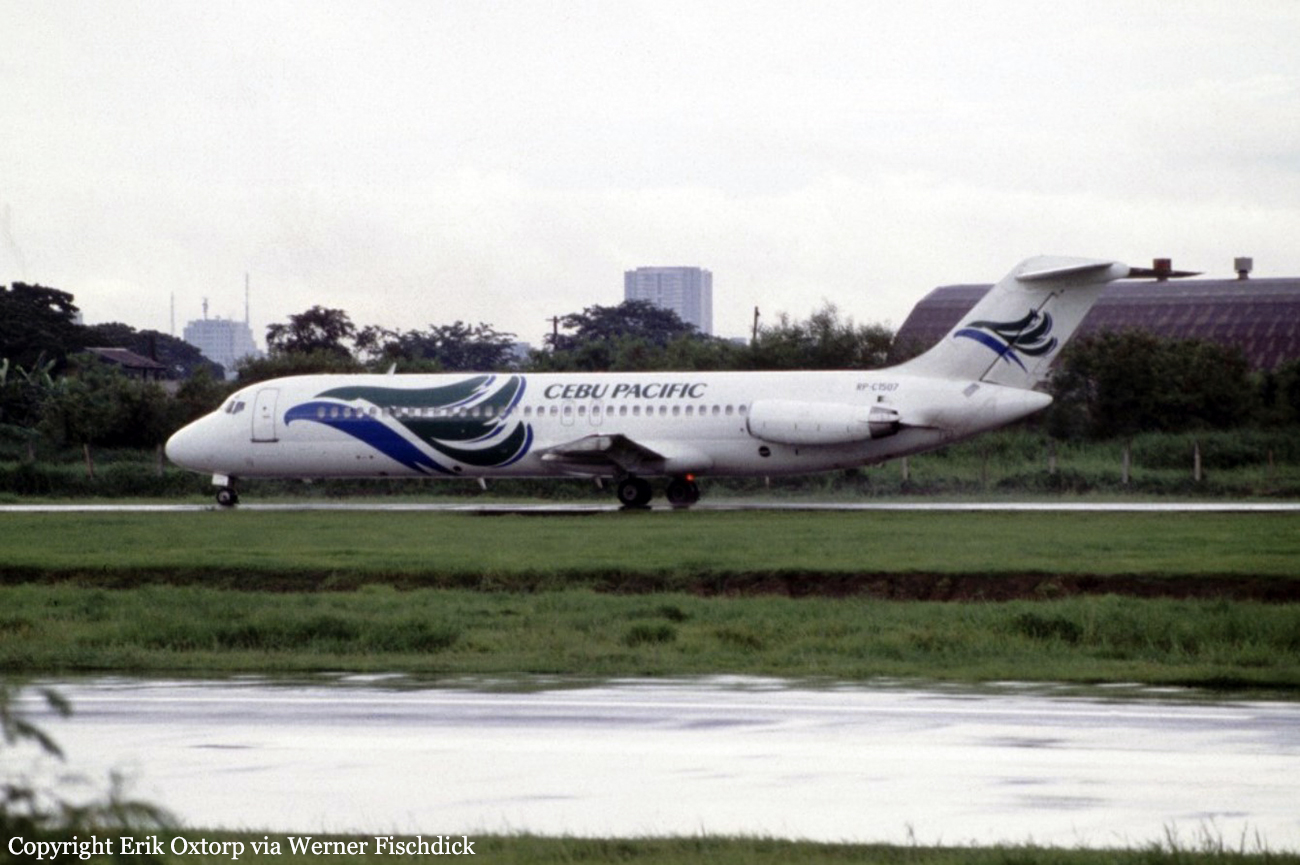
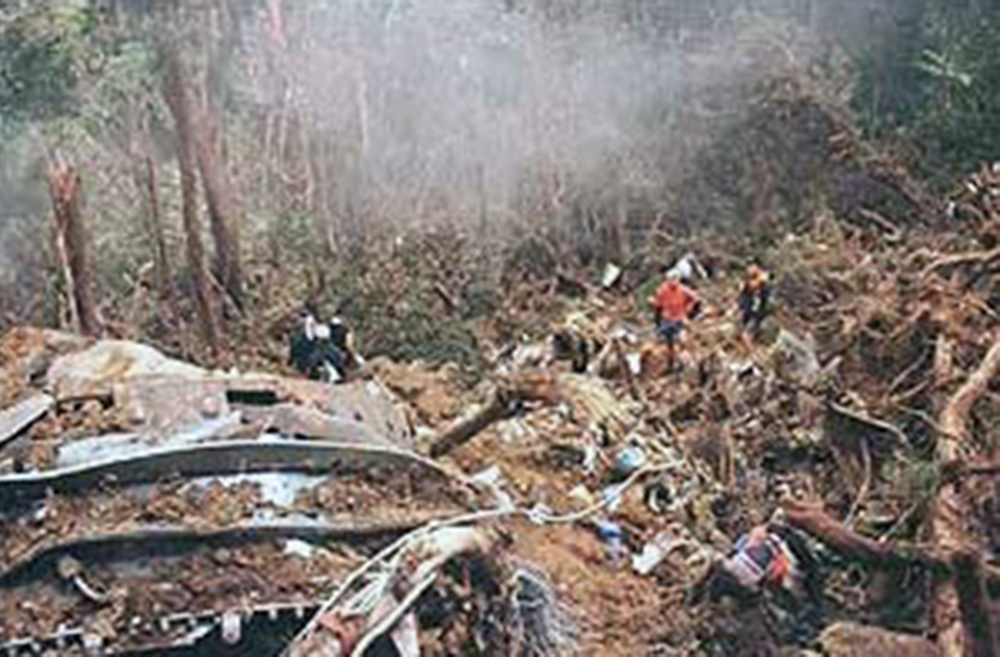
Crash of a Douglas DC-9-32 in Mexico City
Date & Time:
Oct 15, 1997 at 2030 LT
Registration:
XA-DEJ
Survivors:
Yes
MSN:
47594
YOM:
1973
Crew on board:
5
Crew fatalities:
Pax on board:
67
Pax fatalities:
Other fatalities:
Total fatalities:
0
Circumstances:
The base of the empennage struck the runway surface upon landing at Mexico City-Benito Juárez Airport. The aircraft was stopped on the runway and all 72 occupants evacuated safely. The aircraft was written off.

Crash of a Douglas DC-9-32 near Nuevo Berlin: 74 killed
Date & Time:
Oct 10, 1997 at 2210 LT
Registration:
LV-WEG
Survivors:
No
Schedule:
Posadas - Buenos Aires
MSN:
47446
YOM:
1969
Flight number:
AU2553
Crew on board:
5
Crew fatalities:
Pax on board:
69
Pax fatalities:
Other fatalities:
Total fatalities:
74
Captain / Total hours on type:
177.00
Copilot / Total hours on type:
1384
Aircraft flight hours:
56854
Aircraft flight cycles:
54800
Circumstances:
The aircraft departed Posadas-Libertador General José de San Martín Airport at 2118LT on a regular scheduled flight to Buenos Aires, carrying 69 passengers and five crew members. While cruising at an altitude of 35,000 feet, weather conditions deteriorated with cumulonimbus reported till 49,000 feet, stormy weather, icing conditions and severe turbulences with winds up to 80 km/h and an OAT of -59° C. The crew modified his route and entered the Montevideo FIR without contacting Montevideo ATC. At 2204LT, the aircraft entered an area with severe icing conditions and three minutes later, the copilot (pilot-in-command) initiated a descent without prior permission. Meanwhile, the captain contacted Ezeiza Control, requesting permission to descend. Ezeiza Control radioed that the flight was over Uruguay territory and that they needed to contact Montevideo Control for permission. At 2209:17, Montevideo ATC cleared the crew to descend to FL257, an altitude reached at 2210:25. During the descent the first officer complained that his airspeed indicator did not seem to be working correctly. Descending through FL300, the first officer extended the slats. The pilots were trained to extend slats when recovering from approach to stall situations at 10,000 - 12,000 feet. However, the actual airspeed at the time of extension was higher than permitted. This exceeded the design limit, causing an asymmetry. The aircraft entered an uncontrolled descent and crashed in a near vertical attitude in an open field located about 21 km east of Nuevo Berlin. The aircraft disintegrated on impact and all 74 occupants were killed. At the point of impact, a cratere of 10 metres deep by 30 metres wide was found. The accident was not survivable. It was reported that that the airspeed suddenly increased from 200 knots to 450 knots in four seconds, probably after the Pitot tubes got iced.
Probable cause:
The immediate cause of the accident was likely that at an altitude of 30,000 feet, the first officer, who was the pilot-in-command, found himself in flight conditions which induced him to extend the slats. This manoeuvre was completed at a speed much higher than the limit of the structural design of the slats, and their extension caused an asymmetry and a subsequent loss of control from which a recovery was not possible. The copilot's interpretation as to the need to extend the slats would have been a result of erroneous indications of low speed (IAS), caused by blockage of the Pitot tubes which resulted from icing conditions while cruising in clouds with an extreme OAT of -59° C. It was not possible to determine if the obstruction was caused by the crew by not activating the heating system via the selector switch, or failure of that system.
The following contributing factors were identified:
a) No indication of Mach number on the speed indicators installed in the accident aircraft within its flight envelope, with air speeds below 250 KIAS.
b) Lack of crew training in flight instrument failures and upset recovery.
c) Lack of crew training in the recovery of approach to stall in the DC-9 aircraft in "clean configuration" in accordance with the procedures specified in the FCOM, section 5, 10-0-0, code 30.
d) Lack of instruction and pilot training in crew resource management (CRM).
e) Absence of a warning light Pitot/Stall-Heater OFF on the annunciator panel.
f) Deficiency in operational procedures.
The following contributing factors were identified:
a) No indication of Mach number on the speed indicators installed in the accident aircraft within its flight envelope, with air speeds below 250 KIAS.
b) Lack of crew training in flight instrument failures and upset recovery.
c) Lack of crew training in the recovery of approach to stall in the DC-9 aircraft in "clean configuration" in accordance with the procedures specified in the FCOM, section 5, 10-0-0, code 30.
d) Lack of instruction and pilot training in crew resource management (CRM).
e) Absence of a warning light Pitot/Stall-Heater OFF on the annunciator panel.
f) Deficiency in operational procedures.
Final Report:
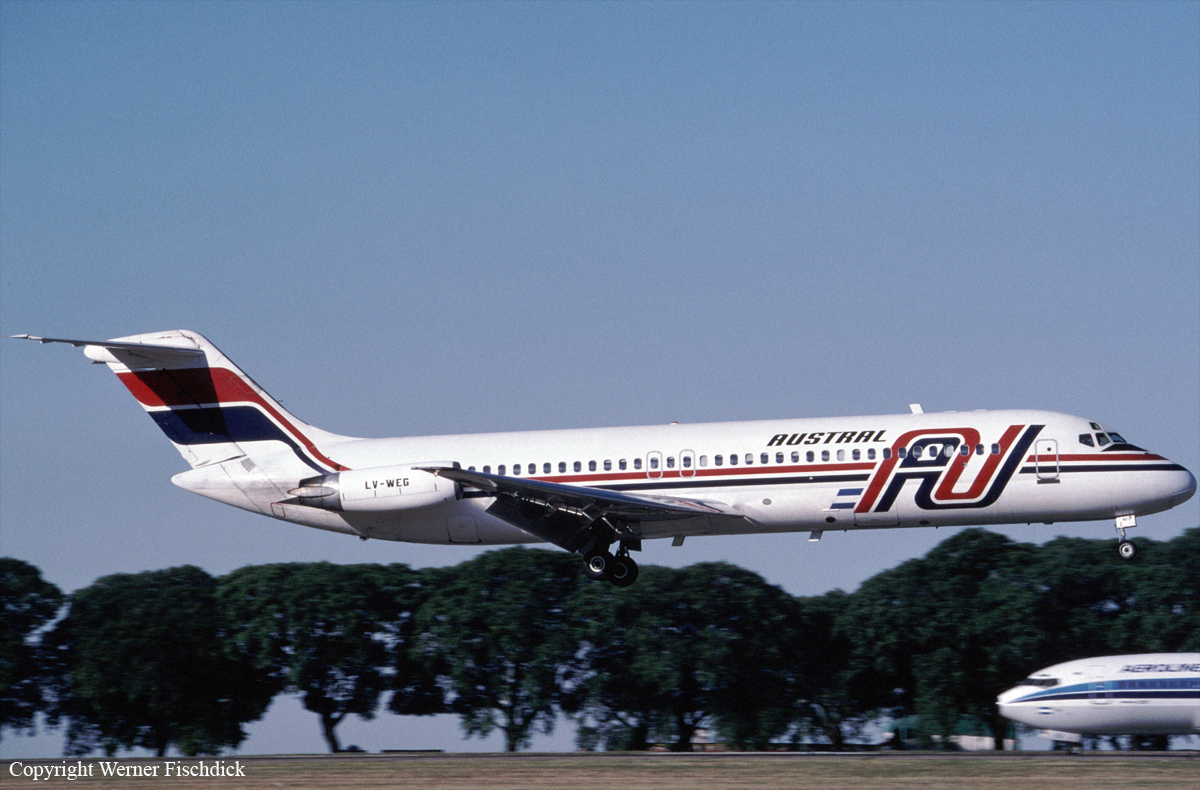
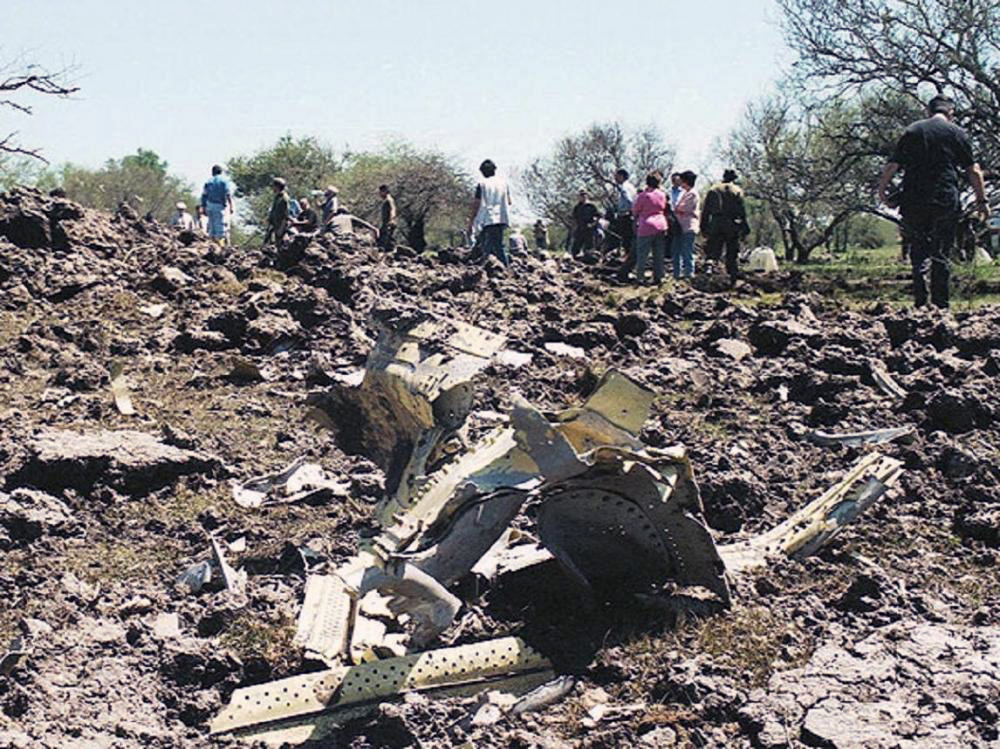
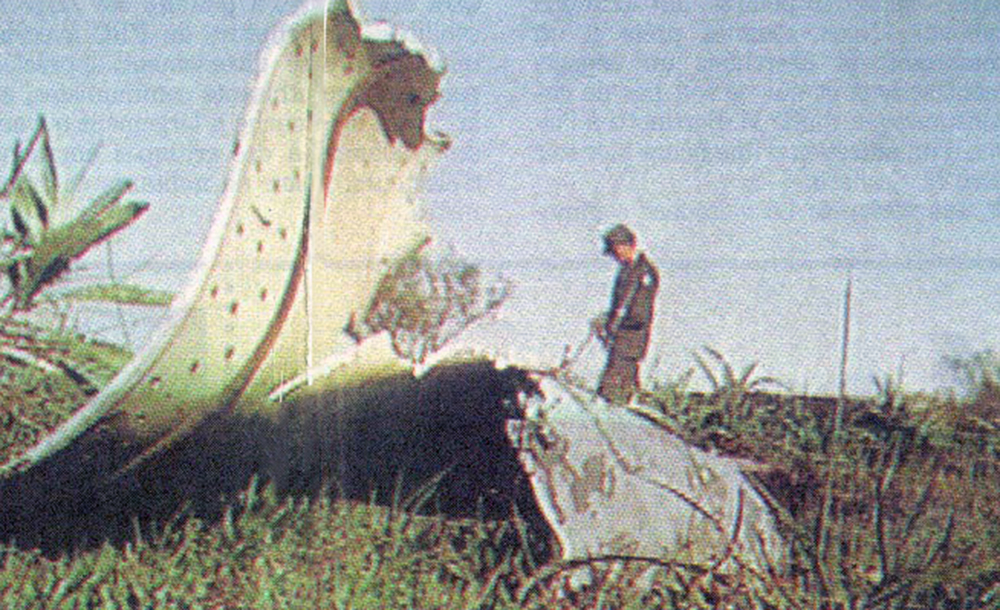
Crash of a Douglas DC-9-51 in Abidjan
Date & Time:
Apr 12, 1997 at 1350 LT
Registration:
9G-ACM
Survivors:
Yes
Schedule:
Accra - Abidjan
MSN:
47755
YOM:
1978
Flight number:
GH560
Crew on board:
7
Crew fatalities:
Pax on board:
97
Pax fatalities:
Other fatalities:
Total fatalities:
0
Circumstances:
Following an uneventful flight from Accra-Kotoka Airport, the crew started the descent to Abidjan-Félix Houphouët-Boigny Airport in poor weather conditions. Due to heavy rain falls, the horizontal visibility did not exceed 2 km and on final, the captain decided to initiate a go-around procedure. Few minutes later, the crew started a second approach to runway 21, established on the ILS but continued the approach above the glide. This caused the aircraft to land 900 metres past the runway threshold. On a wet runway surface, the aircraft skidded and veered off runway to the left. While contacting soft ground, the aircraft lost its undercarriage and came to rest 1,800 metres past the runway threshold. All 104 occupants were evacuated, among them three passengers were slightly injured. At the time of the accident, weather conditions were poor with heavy rain falls and wind from 110 gusting at 25 knots.

Crash of a Douglas DC-9-15 in Tampico
Date & Time:
May 14, 1996
Registration:
XA-SNR
Survivors:
Yes
Schedule:
Orlando – Cancún
MSN:
45699
YOM:
1965
Flight number:
LL401
Crew on board:
4
Crew fatalities:
Pax on board:
43
Pax fatalities:
Other fatalities:
Total fatalities:
0
Circumstances:
En route from Orlando to Cancún, the crew got lost and was unable to follow the prescribed route, causing the aircraft to deviate from the flight plan to the west. Eventually, the crew was vectored to the Tampico-General Francisco Javier Mina Airport located about 1,144 km northwest of the destination airport. On final approach, both engines failed simultaneously due to fuel exhaustion. The aircraft lost speed, stalled and collided with ILS equipment located about 300 metres short of runway 31. Upon impact, the undercarriage were sheared off and the aircraft crash landed on the runway and came to rest 220 metres further. All 47 occupants evacuated safely while the aircraft was damaged beyond repair.

Crash of a Douglas DC-9-32 in the Everglades National Park: 110 killed
Date & Time:
May 11, 1996 at 1413 LT
Registration:
N904VJ
Survivors:
No
Schedule:
Miami - Atlanta
MSN:
47377
YOM:
1969
Flight number:
VJA592
Crew on board:
5
Crew fatalities:
Pax on board:
105
Pax fatalities:
Other fatalities:
Total fatalities:
110
Captain / Total hours on type:
2116.00
Copilot / Total hours on type:
2148
Aircraft flight hours:
68395
Aircraft flight cycles:
80663
Circumstances:
ValuJet Flight 592 was a scheduled flight from Miami (MIA) to Atlanta (ATL). The inbound flight had been delayed and arrived at Miami at 13:10. Flight 592 had been scheduled to depart at 13:00. The cruising altitude was to be flight level 350 with an estimated time en route of 1 hour 32 minutes. The DC-9 was loaded with 4,109 pounds of cargo (baggage, mail, and company-owned material (COMAT)). The COMAT consisted of two main tires and wheels, a nose tire and wheel, and five boxes that were described as "Oxy Cannisters -‘Empty.’" This cargo was loaded in the forward cargo compartment. Flight 592 was pushed back from the gate shortly before 13:40. The DC-9 then taxied to runway 09L. At 14:03:24, ATC cleared the flight for takeoff and the flightcrew acknowledged the clearance. At 14:04:24, the flightcrew was instructed by ATC to contact the north departure controller. At 1404:32, the first officer made initial radio contact with the departure controller, advising that the airplane was climbing to 5,000 feet. Four seconds later, the departure controller advised flight 592 to climb and maintain 7,000 feet. The first officer acknowledged the transmission. At 14:07:22, the departure controller instructed flight 592 to "turn left heading three zero zero join the WINCO transition climb and maintain one six thousand," which was acknowledged. At 14:10:03, the flight crew heard a sound, after which the captain remarked, "What was that?" At that moment, the airplane was at 10,634 feet msl, 260 knots indicated airspeed (KIAS), and both engine pressure ratios (EPRs) were 1.84. At 14:10:15, the captain stated, "We got some electrical problem," followed 5 seconds later with, "We’re losing everything." At 14:10:21, the departure controller advised flight 592 to contact Miami on frequency 132.45 mHz. At 14:10:22, the captain stated, "We need, we need to go back to Miami," followed 3 seconds later by shouts in the background of "fire, fire, fire, fire." At 14:10:27, the CVR recorded a male voice saying, "We’re on fire, we’re on fire." At 14:10:28, the controller again instructed flight 592 to contact Miami Center. At 14:10:31, the first officer radioed that the flight needed an immediate return to Miami. The controller replied, "Critter five ninety two uh roger turn left heading two seven zero descend and maintain seven thousand." The first officer acknowledged the heading and altitude. The peak altitude reached was 10,879 feet msl at 14:10:31, and about 10 seconds a wings-level descent started. Shouting in the cabin subsided. The controller then queried flight 592 about the nature of the problem. The captain stated "fire" and the first officer replied, "uh smoke in the cockp... smoke in the cabin." The controller responded, "roger" and instructed flight 592, when able, to turn left to a heading of two five zero and to descend and maintain 5,000 feet. At 14:11:12, a flight attendant was heard shouting, "completely on fire." The DC-9 began to change heading to a southerly direction and at 14:11:26, the north departure controller advised the controller at Miami Center that flight 592 was returning to Miami with an emergency. At 14:11:37, the first officer transmitted that they needed the closest available airport. At 1411:41, the controller replied, "Critter five ninety two they’re gonna be standing (unintelligible) standing by for you, you can plan runway one two when able direct to Dolphin [a navaid] now." At 14:11:46, the first officer responded that the flight needed radar vectors. At 14:11:49, the controller instructed flight 592 to turn left heading one four zero. The first officer acknowledged the transmission. At 14:12:45, the controller transmitted, "Critter five ninety two keep the turn around heading uh one two zero." There was no response from the flightcrew. The last recorded FDR data showed the airplane at 7,200 feet msl, at a speed of 260 KIAS, and on a heading of 218 degrees. At 14:12:48, the FDR stopped recording data. The airplane’s radar transponder continued to function; thus, airplane position and altitude data were recorded by ATC after the FDR stopped. At 14:13:18, the departure controller instructed, "Critter five ninety two you can uh turn left heading one zero zero and join the runway one two localizer at Miami." Again there was no response. At 14:13:27, the controller instructed flight 592 to descend and maintain 3,000 feet. At 1413:37, an unintelligible transmission was intermingled with a transmission from another airplane. No further radio transmissions were received from flight 592. At 14:13:43, the departure controller advised flight 592, "Opa Locka airport’s about 12 o’clock at 15 miles." The accident occurred at 14:13:42. Ground scars and wreckage scatter indicated that the airplane crashed into the Everglades in a right wing down, nose down attitude.
Probable cause:
The National Transportation Safety Board determines that the probable causes of the accident, resulting in a fire in the Class D cargo compartment from the actuation of one or more oxygen generators improperly carried as cargo, were: (1) the failure of SabreTech to properly prepare, package, identify, and track unexpended chemical oxygen generators before presenting them to ValuJet for carriage; (2) the failure of ValuJet to properly oversee its contract maintenance program to ensure compliance with maintenance, maintenance training, and hazardous materials requirements and practices; and (3) the failure of Federal Aviation Administration (FAA) to require smoke detection and fire suppression systems in Class D cargo compartments. Contributing to the accident was the failure of the FAA to adequately monitor ValuJet's heavy maintenance program and responsibilities, including ValuJet's oversight of its contractors, and Sabre Tech's repair station certificate; the failure of the FAA to adequately respond to prior chemical oxygen generator fires with programs to address the potential hazards; and the failure of ValuJet to ensure that both ValuJet and contract maintenance employees were aware of the carrier's no-carry hazardous materials policy and had received appropriate hazardous materials training." (NTSB/AAR-97/06)
Final Report:
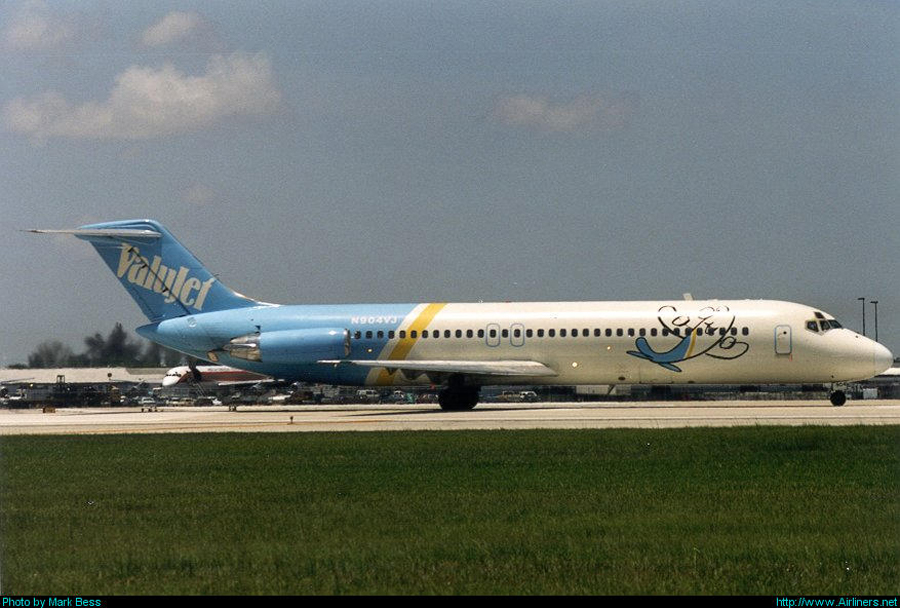
Crash of a Douglas DC-9-32 in Houston
Date & Time:
Feb 19, 1996 at 0904 LT
Registration:
N10556
Survivors:
Yes
Schedule:
Washington DC - Houston
MSN:
47423
YOM:
1970
Flight number:
CO1943
Crew on board:
5
Crew fatalities:
Pax on board:
82
Pax fatalities:
Other fatalities:
Total fatalities:
0
Captain / Total hours on type:
5000.00
Copilot / Total hours on type:
575
Aircraft flight hours:
63132
Aircraft flight cycles:
58913
Circumstances:
The airplane landed wheels up and slid 6,850 feet before coming to rest in grass about 140 feet left of the runway centerline. The cabin began to fill with smoke, and the airplane was evacuated. Investigation showed that because the captain had omitted the 'Hydraulics' item on the in-range checklist and the first officer failed to detect the the error, hydraulic pressure was not available to lower the landing gear and deploy the flaps. Both the captain and the first officer recognized that the flaps had not extended after the flaps were selected to 15°. The pilots then failed to perform the landing checklist and to detect the numerous cues alerting them to the status of the landing gear because of their focus on coping with the flap extension problem and the high level of workload as a result of the rapid sequence of events in the final minute of flight. The first officer attempted to communicate his concern about the excessive speed of the approach to the captain. There were deficiencies in Continental Airlines' (COA) oversight of its pilots and the principal operations inspector's oversight of COA. COA was aware of inconsistencies in flightcrew adherence to standard operating procedures within the airline; however, corrective actions taken before the accident had not resolved this problem.
Probable cause:
The captain's decision to continue the approach contrary to Continental Airlines (COA) standard operating procedures that mandate a go-around when an approach is unstabilized below 500 feet or a ground proximity warning system alert continues below 200 feet above field elevation. The following factors contributed to the accident:
(1) the flightcrew's failure to properly complete the in-range checklist, which resulted in a lack of hydraulic pressure to lower the landing gear and deploy the flaps;
(2) the flightcrew's failure to perform the landing checklist and confirm that the landing gear was extended;
(3) the inadequate remedial actions by COA to ensure adherence to standard operating procedures; and
(4) the Federal Aviation Administration's inadequate oversight of COA to ensure adherence to standard operating procedures.
(1) the flightcrew's failure to properly complete the in-range checklist, which resulted in a lack of hydraulic pressure to lower the landing gear and deploy the flaps;
(2) the flightcrew's failure to perform the landing checklist and confirm that the landing gear was extended;
(3) the inadequate remedial actions by COA to ensure adherence to standard operating procedures; and
(4) the Federal Aviation Administration's inadequate oversight of COA to ensure adherence to standard operating procedures.
Final Report:

